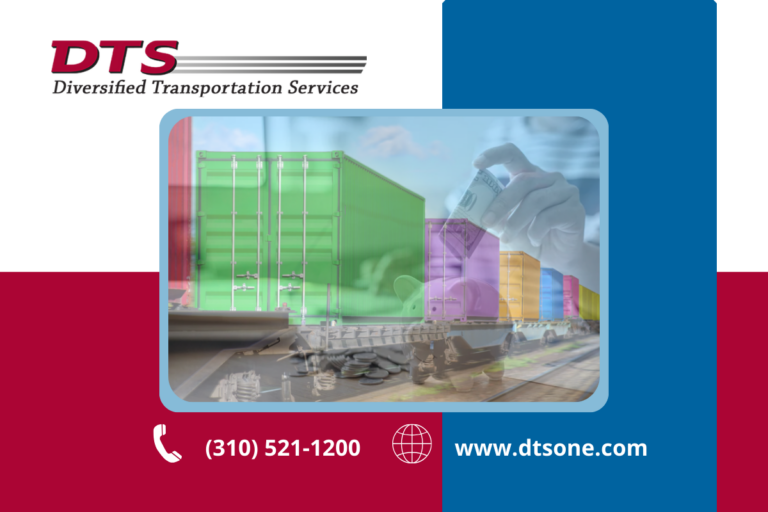
One of the greatest things about working in the logistics business is getting to craft unique solutions for our customers, no matter what they’re shipping and no matter when it needs to get there. There’s an almost unlimited number of shipping options out there to match the unlimited variety of goods that the U.S. ships all around our shores, but no option is quite as interesting to me as domestic intermodal freight transportation.
Intermodal means “using multiple modes” of shipping freight — so domestic intermodal freight transportation is the transportation of freight, within the United States, that uses more than one “mode” or method of shipping on the way to the destination.
So this can manifest in a variety of ways — for international shipping, you often see the combination of truck and plane or truck and ship (and then back to truck, rail, plane, or a smaller ship on the other end). However, you might see land, sea, and air all combined for one shipment when the destination is particularly difficult to reach, or when the shipment is complex and needs to reach many different destinations.
The most common combination you’ll see in the U.S., especially for smart shippers who are thinking outside of the box, is the combination of trucking and rail.
Though we are a long way from the glory days of the railroad in this country, we still maintain one of the most extensive (if not the most extensive) railroad systems in the world.
And that gives you, the shipper, a unique opportunity.
Domestic Intermodal Freight Shipping Is Often an Opportunity to Save
Though intermodal freight shipping is often used simply to get the shipment in question where it needs to go, domestic intermodal freight is more often used to get freight where it needs to go while saving money along the way.
Though shipping by air and by road can get very expensive, shipping via rail is often fairly cheap in comparison — in fact, rail is likely the most cost-effective method of shipping out there.
There are several good reasons for that — first, many rail companies are only shipping when they have a very large shipment (or, as is more often the case) a very large collection of shipments, kind of like LTL shipping on steroids.
Shipping so much on a single shipment with a vehicle that doesn’t encounter even close to the number of starts and stops that a truck encounters, and that is way more efficient, for a wide variety of technical reasons, means that the cost of shipping is vastly reduced.
Second, let’s talk a bit about the efficiency of trains — though their engines are larger, they can carry vastly more freight than a truck. They also have one large engine (instead of 10 small ones), which leads to greater efficiency.
They’re also traveling on specialized rails that have reduced friction, and the engine, which is designed to be aerodynamic, moves all the air in front of it out of the way for the dozens of cars behind it, allowing all those goods to move with significantly reduced air friction, adding up to more efficiency. This translates to a more environmentally friendly method of shipping,
To top it off, whereas trucks are at the mercy of traffic and may be managed by only a single person, trains are much less affected by road traffic (if at all) and are often managed by large companies who make it their business to be as efficient as possible.
This means that, if you have the flexibility to use rail for all or a portion of your shipment, you should do so.
Domestic Intermodal Freight Shipping Requires Flexibility
And that’s the only real drawback of shipping via rail — it’s generally slower than shipping by truck or plane. For domestic shipments, shipping via ship doesn’t come into play too often, which only leaves rail as a cost-saving option.
The other problem, of course, is that the railroad network, while extensive, does not reach everywhere.
Shipping exclusively via train isn’t very common as most shipments, at the very least, require some form of drayage service (basically, taking the shipment from the railyard to its final destination via truck).
And your shipment will likely need to begin its journey on a truck as well, just to get to the railyard.
But, if you have the extra time and you know what you’re doing, you can save a lot of money on shipping.
You just need a partner to help you — and that’s exactly what Diversified Transportation Services does.
Need Help With a Domestic Intermodal Shipment? We’ve Got You Covered
Our experience shipping a wide variety of goods utilizing many different modes of transportation makes us uniquely qualified to help you find the perfect solution to your needs.
Contact us today to find out how a partnership with Diversified Transportation Services can be the tool you need to save money on transportation while helping to ensure the integrity of every shipment from end to end.
Whether you're a company looking to improve one facet of your supply chain, your entire supply chain, or simply looking for a transportation and logistics consultation, we can help.